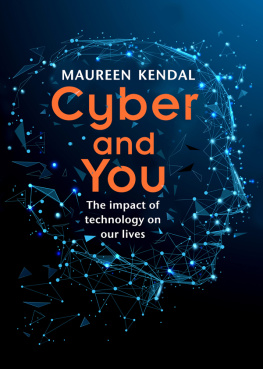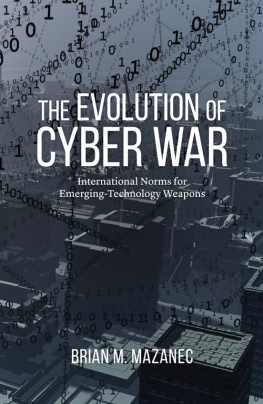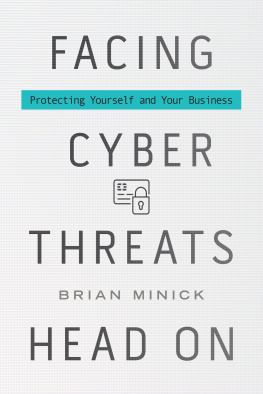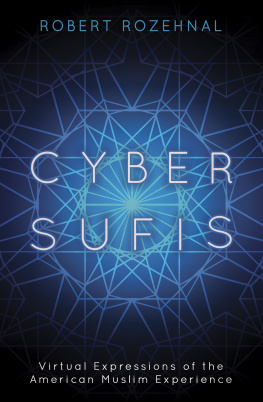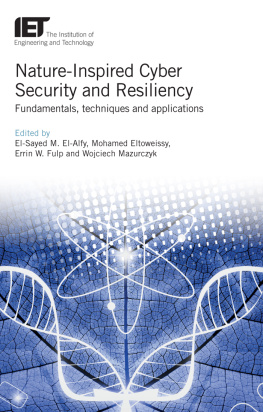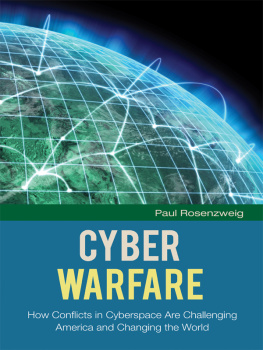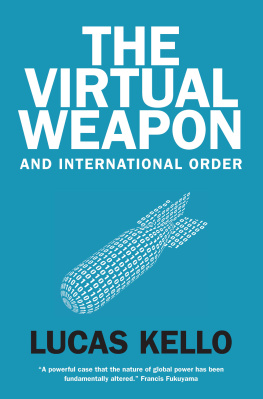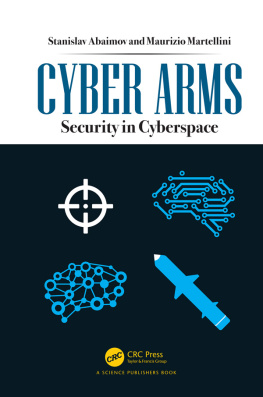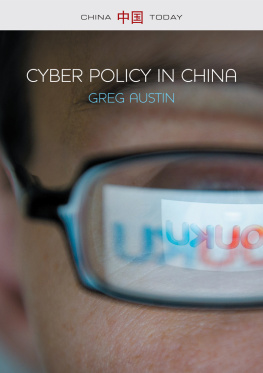Contents
Guide
Maureen Kendal
Cyber
and
You
The impact of technology on our lives

Legend Business Ltd, 107-111 Fleet Street, London, EC4A 2AB
Contents Maureen Kendal 2019
The right of the above author to be identified as the author of this work has been asserted in accordance with the Copyright, Designs and Patents Act 1988. British Library Cataloguing in Publication Data available.
Print ISBN 9781789550078
Ebook ISBN 9781789550061
Set in Times. Printing managed by Jellyfish Solutions Ltd
Cover design by Tom Sanderson | www.the-parish.com
Publishers Note
Every possible effort has been made to ensure that the information contained in this book is accurate at the time of going to press, and the publishers and authors cannot accept responsibility for any errors or omissions, however caused. No responsibility for loss or damage occasioned to any person acting, or refraining from action, as a result of the material in this publication can be accepted by the editor, the publisher or any of the authors.
All rights reserved. No part of this publication may be reproduced, stored in or introduced into a retrieval system, or transmitted, in any form, or by any means electronic, mechanical, photocopying, recording or otherwise, without the prior permission of the publisher. Any person who commits any unauthorised act in relation to this publication may be liable to criminal prosecution and civil claims for damages.
CYBER AND YOU
CONTENTS
Introduction
Cyber is changing you: there is a huge impact of technology on our lives.
Cyber is changing: this impacts on you.
Cyber is everywhere: this changes your life.
Cyber is constantly evolving. It is not only technology that is impacting on us, but the way we live within our cyber world, positively using or abusing these enhancements. Internet Technology is pervasive. It permeates our lives, it is embedded in our homes and the products we buy, it determines our lifestyle. We are cyberselves. How we define our identity, our design choices, our relationships with family, friends and colleagues is usually linked to internet technology.
Technology permeates our politics. We face massive ruptures in political identities and affiliations. The means and might of influencing agents, such as: national states, international federations and unions and the media IT giants compete to dominate. The main global challenges are identified as climate change, global development and cyber awareness and cybersecurity. However, it is the complex inter-relationships between the actions that are taken to address these challenges which need to be recognised and investigated.
This book aims to explore areas of our lifestyle that have changed and are evolving due to cyber technologies. It is crucial that we all are involved and help determine the future of cyber technology and the impact it is having on us, our social networks, identity and community and the global cyber landscape. If not, we could be walking blindfolded into disaster. We need to own the technological systems, not let the systems dictate to us.
PART 1:
THE CYBER LANDSCAPE
In the early-1990s, as we turned towards the 21st century, the internet, interactive multimedia and social media were perceived to be on the cutting edge. Since then we have been part of the transformational wave of social and cultural change. Today, culture, education, technological tools and communities are designed and delivered using digital production and distribution; offering the user a converged seamless digital cyber landscape. Smart systems and their tools accessed via our smartphones are used interchangeably for work and play, for pleasure and political advocacy. Smart technology is not only offering enablers for effective communication but also determining the quality of our relationships, our communities and lifestyles.
In 1999, I read, rather I consumed with excitement, The Age of Spiritual Machines, by Ray Kurzweil. I was seduced by the interweaving threads of the scifi episodic novel with knowledge about emerging internet technology. Kurzweil was concerned with anticipating how human relationships would change within the context of this new cyber world. Today Kurzweil continues to push the boundaries of emerging technologies and predicted the advent of cyberselves and beyond. He advocates that transformational change and technological disruption, whilst transitioning every part of our lives, business, industry and society, is accelerating rapidly. This is an unprecedented period of transformational change. He calls for the global agencies to develop an exponential mindset to harness emerging technologies in order to create a better and more equitable future for us all.
In 2008, Ray Kurzweil and associates supported the launch of Singularity University (SU).
Exponentially accelerating technologies include cyber technologies. These emerging technologies offer significant advancements in artificial intelligence (AI), augmented reality (AR), virtual reality (VR), immersive reality (XR), data science, digital biology and biotech, medicine, nanotech and digital fabrication, networks and computing systems, robotics, and autonomous vehicles. Alongside these, global changes need to be addressed. Dynamic restless systemic relationships between different global challenges indicate a complex system. SU, in agreement with the World Economic Forum (WEF) postulate that the grand challenge of our time [is] to adapt to a world of accelerating change and apply technology for the greatest good. SUs value-driven agenda sets out to solve 12 Global Grand Challenges (GGC): Resource Needs: Energy, Environment, Water, Food, Shelter, Space; Societal Needs: Security, Governance, Learning, Health, Disaster Resilience, Prosperity. The tools we have to solve these challenges include cyber technology but crucially the capacity to work together, to share our thinking about change. Our mindset is changing. We, as part of our global system, will need to share conceptual frameworks. We need to build into these frameworks how to identify, define, monitor and evaluate inputs, outputs, outcomes, and impact. These methods, measures and the resulting outcomes need to be agreed through consensus and shared across different communities with different agendas. Designing with a shared mindset enables collaborative global decision-making. This process seeks to achieve measures of the common good, checks and balances within regulatory systems and how to generate, maintain and enforce codes of practice and law enforcement for the common good.
We have started to think digitally. Peter Diamandis articulated this journey of change as 6 Ds.
Digitised we are using computerised information science to manage our cyber lifestyles.
Deceptive we may hardly realise it is happening. It will be almost imperceptible.
Disruptive it will radically change our current lifestyles and systems making them obsolete.
Dematerialised things are becoming miniaturised, ubiquitous and pervasive, internet of things known as IoT, everywhere, anytime.
Demonetised replicable and affordable through economics of scale.
Democratised accessible to all.
Technological change is exponential. In comparison to previous innovation, in the next century, we will not experience 100 years of progress, but 20,000 years. Ray Kurzweil has predicted that engineers will successfully reverse-engineer the human brain.

